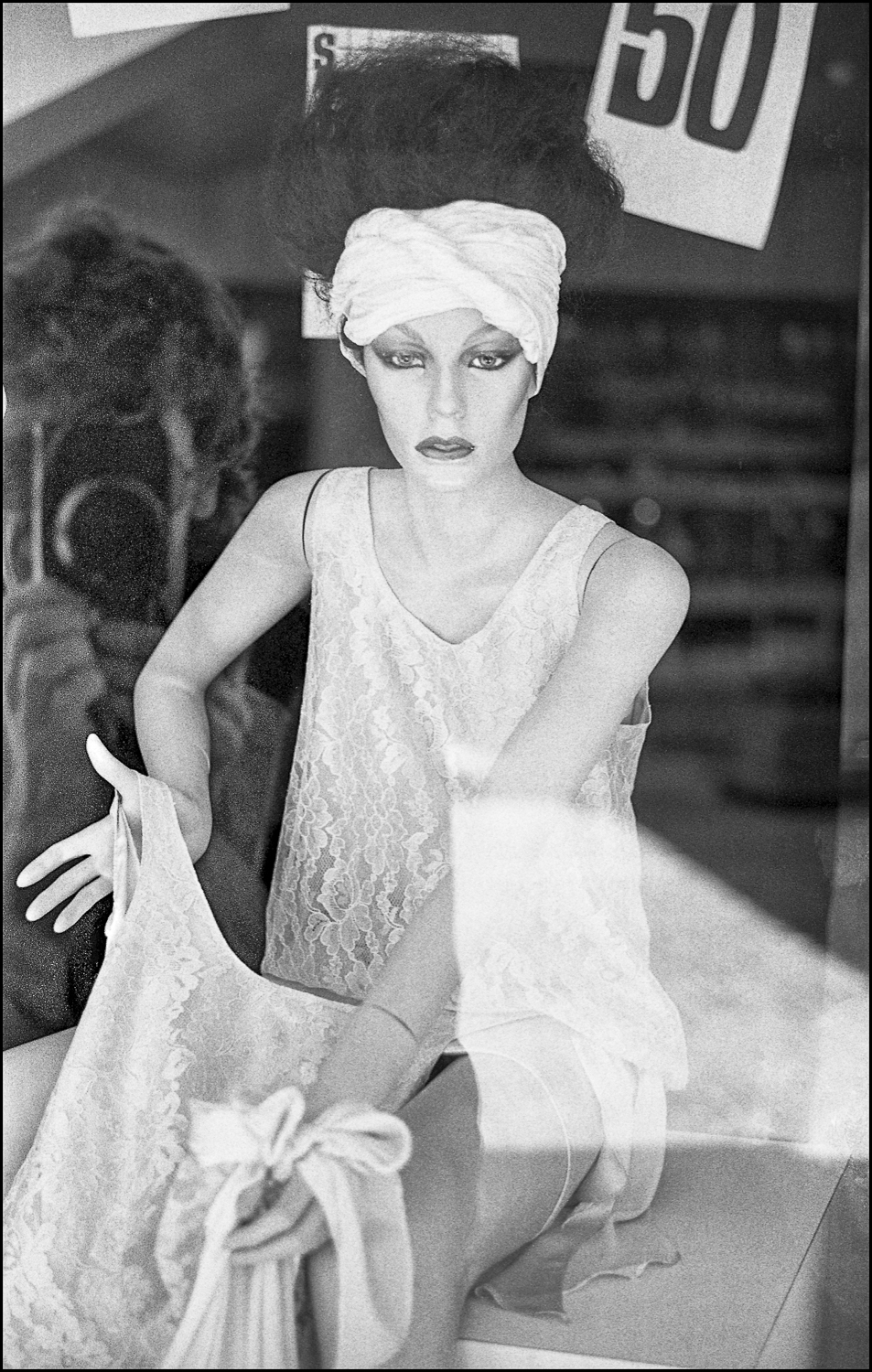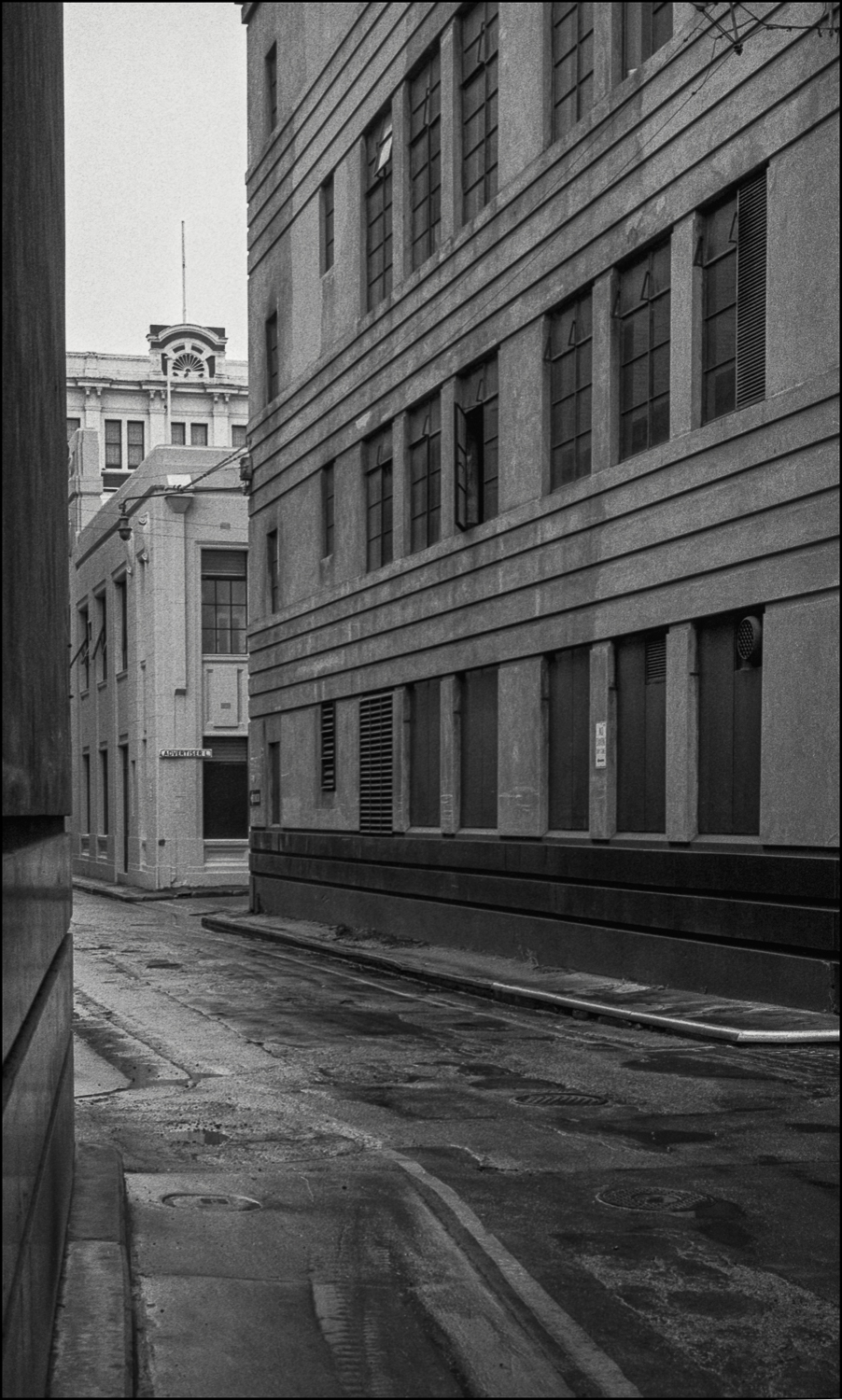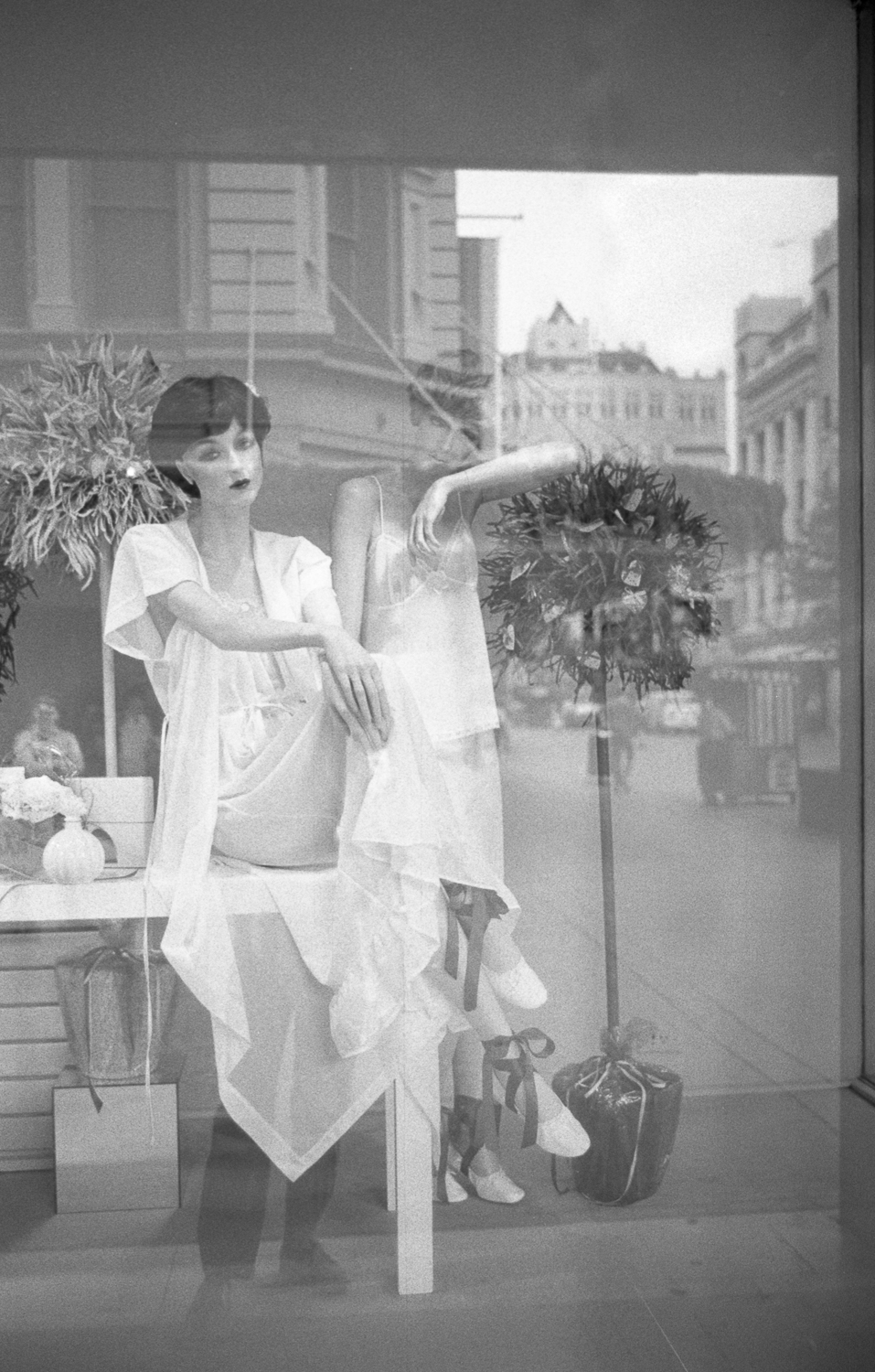The Bowden Archives and Other Marginalia is constructed from my unruly 1980s photographic archives, and it primarily consists of photos that I made in Adelaide during the 1980s; a decade that saw the melting away of all that was once solid and stable and the emergence of flux and flow in Australia’s culture. These archives provide a space for exploring the liquidity of culture without become lost in its fast-moving currents, and the book is a form of memory work that adopts an interpretive and reconstructive approach to the everyday of the past through a process of weaving together the public and private.
I had left Melbourne for the historically conservative city of Adelaide because I wanted to establish a critical distance from the American fine art print tradition and formalist modernism that were then circulating through the various public and private photographic galleries in Melbourne. At that stage I wasn’t aware of postmodernism’s critique of the frozen assumptions of US style American modernist formalism and its deconstruction of of the legacy of modernist photography as a fine art.
I still held firmly to the Enlightenment understanding of progress. This assumes the possibility that the future will be fundamentally different from the past, because new ways of understanding the world create future possibilities that are conceived as new in a way that cannot be entirely derived from previous experience. In the 1970s Dunstan’s Labor government, was leading the way in Australia with social reform, debating Aboriginal rights, challenging the White Australia Policy and legislating to decriminalise homosexuality.
The progressive thinking and sense of fun were trademarks of the “Dunstan era’s” conception of the darkness and light of Australian modernity and photography appeared to be onside with the progressive thinking of the 1970s.

I had a studio in Bowden and worked part time at Conroys Smallgoods factory in Bowden to finance the photography. These black and white pictures are fragments of the suburb of Bowden inAdelaide, Adelaide’s CBD, and, after I purchased a Kombi, the city’s beaches and the countryside.
The rationale for the book is an observation by Gael Newton in her Preface to Photo Files: an Australian Photography Reader in 1999 that:
Currently there is a dearth of books in print on the most obvious topics. Huge amounts of work needs to be done in standard publishing of historical and contemporary research of a sustained nature.
The Bowden Archives and Other Marginalia is situated in that empty space–a silence of history in that the art photography or photo art in Adelaide has been consistently overlooked by the art historians. The current book, in building on an earlier one, Abstract Photography: Re-evaluating Visual Poetics in Australian Modernism and Contemporary Practice by Gary Sauer-Thompson and Adam Dutkiewicz, is a contribution to a critical history of photography in Australia.
Adelaide in the 1980s was undergoing a process of de-industrialization, and this looked to be a protracted and painful experience. Adelaide’s future in a globalised world appeared to be one of high unemployment, falling revenue and economic stagnation. If South Australia’s options in an era of neo-liberalism were either slow decline, or change through shifting from an industrial to a post-industrial society, then the steady economic decline, broken pathways and decay of this historical moment caused anxieties and fears about the future amongst its inhabitants.
The 1980’s however, were a period of a finance driven property boom, followed by a bust, which was symbolised by the rise and fall of the state bank and developers and businesses hitting the wall. The bust was compounded by the centralisation of national and international companies that established head offices in Sydney or Melbourne and abandoned their regional offices. The process of creative destruction mean that small regional centres like Adelaide got consigned to a large extent to being back offices and mere regional offices.
Adelaide became a city of crisis with lots of dead spaces with the failures and illusions of the past weighing heavily on, and haunting, the present.

Anxiety about economic decline, an uncertain future and a depression about a nihilistic present became a mode of life. I had left living in Bowden and Ovingham when I purchased a cottage in the southeast corner of Adelaide during the boom. My experience of the end of the 1980s was one of my relationship finishing traumatically, going deeply into debt to buy my partner out of her share of the cottage; then hanging onto the cottage for dear life whilst trying to do a PhD at Flinders University of South Australia. That trauma marked the end of my photography in this period.
My personal memories of this decade are flawed and malleable. They have become foggy, or have faded completely like old photographs, yet I can still fish them out of a hiding place when I try to remember something through looking through my photographic archives. However, I have forgotten a lot of my experiences and memories and there are blank years. Many of my emotions and experiences have been repressed.
We do associate photographs with memories; they are the relics of our time. A snapshot photograph becomes like a relic that keeps the memory alive. Our attachment to photographs suggests a surviving superstition that they represent more than just images, and in fact constitute an invaluable link to the past and to ourselves. However, I have no flashbulb memory—that is, a significant event that acts like a powerful flash illuminating the dark corners of the mind and preserving every detail in its immediate vicinity.
My memories, by and large, are associated with, and depend upon, these photographs. As such my memory is “archival” in that it extensively relies on the materiality of the trace and the visibility of the image. This process of recuperative memory is not simply remembering the past – recuperating it – but remembering memory itself, where it appears to have slipped away.

This idea of photo/memory that enables a fictional narrative based on an image-text. Text and image, intricately entangled in a narrative web, work in collaboration to tell a complicated story of loss and longing in a particular place though opening up a world into the past. It is difficult to plumb the depths of memories to excavate relevant information these photographs as traces of the past help me figure out who I was then and to remember how I experienced the history of this decade.
As sites of memory, photographic images (whether digital or analogue) offer not a view on history but, rather as mnemic devices, they are perceptual phenomena upon which a historical representation may be constructed– in this case a memory of Australian modernity in Adelaide in the 1980s.
As with human memory, we can no longer verify the original experience or sensation of the photograph, but the image provides a scene in which we may bring voluntary (studium) or involuntary (punctum) memories to bear upon it. Voluntary memory is like the work of history, but involuntary memory belongs to personal affect. These are both often interwoven in complex ways.

The past informs or shapes the present through legacy, memory, trace, retrieval, mourning, commemoration. If these black and white photographs are both a guard against memory loss and a step into a history of the present, then the concern for the past can help inform the imagining of alternative futures to one of deprivation, austerity and negation.
The photos were made from the borderlands of Australian visual culture in the sense that they were made in an isolated Adelaide, and that Australian culture in the 1980s had embraced postmodernism, with its various forms of studio practice, appropriationist art practices, issues of identity and the body, and conflation between realism and positivism. The theoretical attack on both documentary photography’s assumptions about truth and on photographic realism as a positivism has been widespread and influential. Realism and positivism were treated as identical.
One Response
Bowden portraits | The Bowden Archives and Other Marginalia
[…] I mentioned in the Preface I worked part time at Conroys Smallgoods in Bowden to buy the camera equipment to photograph […]